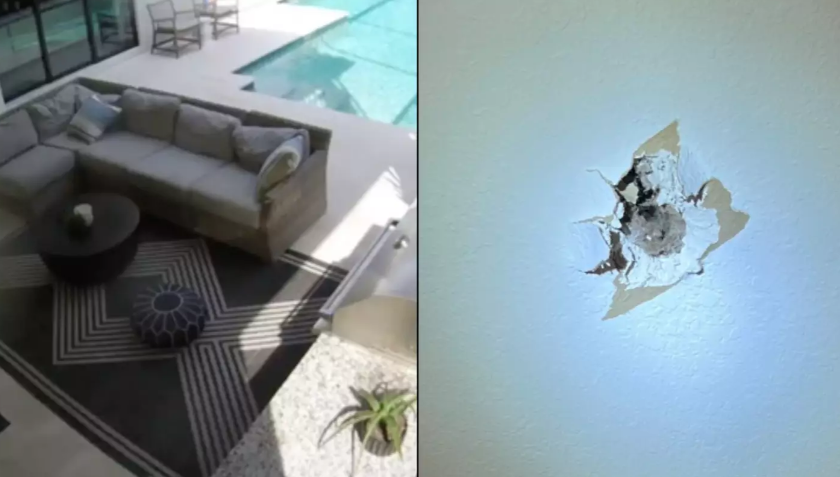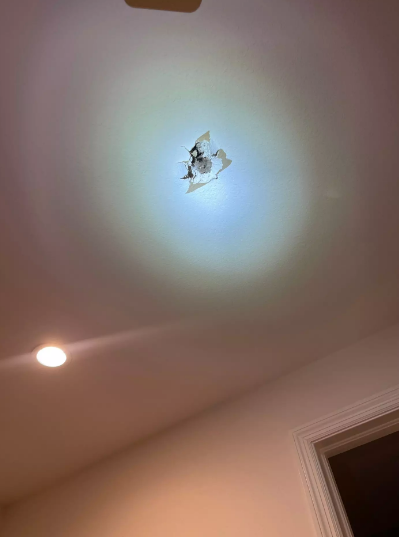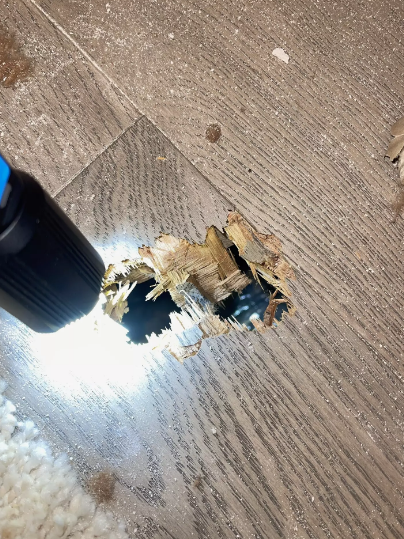A startling incident occurred in Florida when space debris narrowly missed hitting a child after crashing through a house. The debris, reportedly the heaviest trash dump yet from the International Space Station (ISS), caused significant damage to Alejandro Otero's home.
Alejandro Otero, a resident of Florida, captured the shocking moment when space junk tore through his roof and penetrated two floors of his house. He recounted that the debris pieces nearly hit his son, highlighting the potential danger posed by such incidents.
Yes
— Alejandro Otero (@Alejandro0tero) March 16, 2024
Friday March 8th, 2024 at 2:34pm
Here’s a clip from the sound of it crashing into my roof with a timestamp https://t.co/liP0cPQsTt
Taking to social media, specifically X (formerly known as Twitter), Alejandro shared photos and videos of the aftermath, showcasing broken roof tiles and a hole in the ceiling. This incident occurred on Friday, March 8, 2024, at 2:34 pm.
Astronomer and astrophysicist Jonathan McDowell responded to Alejandro's tweets, shedding light on the nature of the debris. McDowell mentioned that the debris was identified as the EP-9 equipment pallet containing used batteries, and it reentered Earth's atmosphere over the Gulf of Mexico between Cancun and Cuba at 1929 UTC (2:29 pm Florida time).
McDowell further explained the trajectory of the debris and its proximity to populated areas like Ft Myers, Florida. He clarified that it was a near-miss incident, with the debris reentering Earth's atmosphere slightly off the predicted path.
Michelle Hanlon, executive director of the Center for Air and Space Law at the University of Mississippi, emphasized the potential liability of countries launching space objects that cause damage on Earth. She stated that if a human-made space object causes damage, the launching country would be liable for compensation.
Alejandro expressed his shock and gratitude that no one was hurt in the incident. He recounted his disbelief at the force of the impact and the extent of the damage caused to his property.
In response to queries about why space junk isn't disposed of by sending it into the sun, McDowell clarified the technical challenges involved. He explained that it would require a substantial rocket to redirect debris towards the sun, highlighting the complexities of space debris management.
Nasa provided an update, mentioning that they collected the debris item and will analyze it at NASA’s Kennedy Space Center in Florida to determine its origin. More information will be available after the analysis.
It's important to note that space junk typically disintegrates upon reentry into Earth's atmosphere, but incidents like these underscore the ongoing challenges of space debris management and the potential risks associated with space activities.
%20(5).png)










